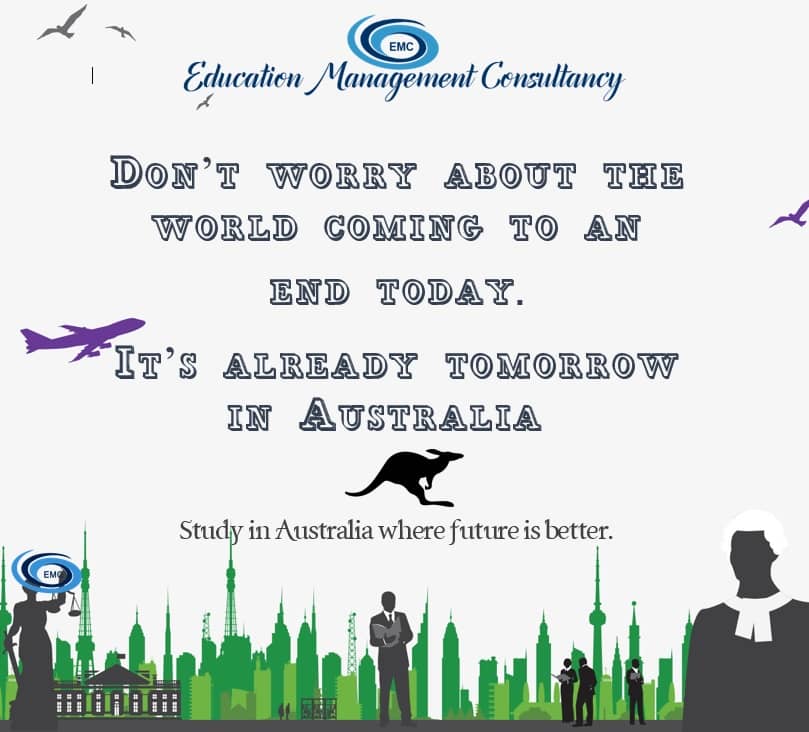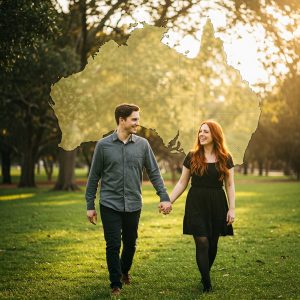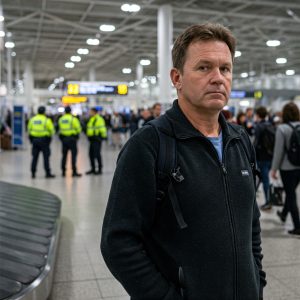Where to Study in Australia
Australia is a large country with a range of diverse and beautiful landscapes. The country
is divided into six states (New South Wales, Queensland, South Australia, Tasmania, Victoria and Western Australia) and two territories (the Northern Territory and the Australian Capital Territory). Each state and territory has its own distinctive character, climate and attractions.
In each of Australia’s states and territories, there is a capital city as well as smaller regional cities and towns. All of Australia’s capital cities provide the vibrant, cosmopolitan lifestyle and multicultural society that you would expect, but each city has its own special character and charm. Remember, there is at least a one-day drive (sometimes much longer) between each capital city and in some instances over four hours of air travel. Away from the hustle, bustle and excitement of the capital cities and their surrounding suburbs, you will find charming regional cities and country areas, which are known for their close communities and relaxed lifestyle. Education institutions can be found in both capital cities and regional cities.
But Australia has far more to offer than its great cities. It also has a beautiful and diverse natural environment just waiting to be explored, including:
• the tropical north of Australia, with its lush green foliage and relaxed outdoor lifestyle
• the ‘red centre’, with its extensive ‘outback’ areas and vast desert landscapes
• natural wonders such as the Great Barrier Reef and Uluru, beautiful bushland, magnificent gorges and breathtaking sunsets
• unique plants and animals found nowhere else in the world
• stunning sandy beaches and surf, and plenty of water activities
• skiing and snowboarding in the mountains during the winter months.
Study in Victoria (VIC)
Studying in Melbourne, Victoria
Victoria’s capital, Melbourne, is Australia’s knowledge, manufacturing and innovation capital. While Victoria occupies just three per cent of the vast Australian continent, it accounts for 25 per cent of the nation’s economic activity.
Victoria’s greatest asset is its people, who come from more than 200 countries and speak over 230 languages and dialects. Victoria’s rich cultural diversity, talented people, world-class education and superior infrastructure attracts tens of thousands of students from around the world each year.
Where your future takes off
Every year, tens of thousands of students from around the world come to Melbourne, Victoria to secure their future. In 2012, Melbourne was ranked fourth in the world in the first global grading of major international student cities, just behind Paris, London and Boston (QS Best Student Cities).
Students come to Victoria for its world-class universities and vibrant vocational education and training sector. They work with renowned scholars in leading research institutions and use state-ofthe- art technology.
Choosing Melbourne, Victoria for your studies means choosing a superior education and enjoying life in one of the world’s most liveable cities. As an international student in Melbourne and Victoria’s regional cities, you will enjoy a cosmopolitan lifestyle, good health services, advice and special support to help you while you study away from home.
Welcome Desk
The Welcome Desk at Melbourne Airport, Terminal 2, is for all students arriving in Melbourne. A friendly volunteer staff will provide a Welcome Kit and information on available services.
Culture Card Victoria
A free international students’ Culture Card is the key to exciting cultural experiences all across Victoria. The Culture Card provides special offers on sports and arts events, and great deals on entry to cultural attractions.
International Student Care Service ISCS
ISCS provides friendly and professional advice, information, support and referral to local services and community resources.
Study Options in Victoria
There are 10 universities in Victoria’s capital city, Melbourne, and five in regional Victoria. There are also many private higher education providers and TAFE institutes.
Victoria’s total student population is around 327,000. Of these, 35 per cent are international students. A further eight per cent are domestic students from other states and territories.
Study in New South Wales (NSW)
Sydney is the capital of New South Wales (NSW) and is the largest and oldest city in Australia. You can even visit Captain Cook’s landing place at Botany Bay, where the first European settlers arrived.
Sydney is also Australia’s most iconic city, spread around the famous Sydney Harbour. It is known around the world for the Sydney Opera House and Sydney Harbour Bridge. The Bridge links the two sides of the city. You can walk across it, or, if you’re really brave, you can climb it and enjoy the amazing views. You can catch one of the ferries that cross the Harbour to enjoy the spectacular views and explore the many interesting places on the water’s edge, such as Luna Park, the Rocks, Circular Quay and Taronga Zoo.
As you would expect from Australia’s largest city, Sydney offers plenty of entertainment, shopping and dining options. You will find markets to explore, along with museums, shopping centres, galleries, bars, clubs, restaurants, karaoke bars and many other exciting places. Be sure to check out the famous Bondi and Manly beaches, with their many beachside shops and cafés. Sydney also hosts numerous festivals and events, including the world-famous Mardi Gras each year — this is a city that knows how to party!
Once you leave Sydney, country NSW also has plenty to offer. The Blue Mountains is a popular day trip, offering spectacular mountain views, bushland and native wildlife. You will also find cafés, restaurants, art galleries, craft shops and many other stores, along with a wide range of outdoor activities such as horse riding, golf and bushwalking.
The Hunter Valley — one of Australia’s major wine producing regions — offers wonderful scenery, gourmet foods and distinctive wines. Close by is Newcastle, which is the state’s second largest city, and, like Sydney, is built around a large harbour. Newcastle is a popular destination for both visitors and students. It is close to Sydney and offers an attractive lifestyle with its large port, beautiful beaches, surfing, fishing and entertainment venues.
A short drive south of Sydney is the thriving regional city of Wollongong, surrounded by lush green valleys and beautiful ocean beaches. Further south is the picturesque Eurobodalla Coast and prime dairy country such as the Bega Valley, with plenty of opportunities for cheese tasting.
North of Sydney is Coffs Harbour, a sub-tropical beachside paradise and popular holiday spot. Further inland is Armidale, in the New England Tablelands, famous for its cathedrals, homesteads and country landscape. Other inland regional centres include Albury, Bathurst, Dubbo, Lismore, Orange and Wagga Wagga.
Housing in NSW
The median weekly rental price in Sydney is AUD$500 for a three-bedroom house and $485 for a one-bedroom unit. In regional New South Wales, the median weekly rental price for a house ranges from $330 to $370 and the median weekly rental price for a unit ranges from $240 to $310.
Transport in NSW
Sydney’s city and suburbs are connected by a network of buses, trains, ferries and light rail. Public transport in regional NSW is usually limited to a local bus service, so access to a car or other form of transport may be required. International students are eligible for discounted travel in some parts of NSW. For more information about public transport and fares, see the NSW Transport Info website.
Climate in NSW
New South Wales has warm summers and mild winters. Sydney has an average maximum temperature of around 25°C in summer, which falls to 16°C in winter.
Note: Information and figures presented here are intended as a guide only and may change. Source of rental data: Australian Property Monitors, December 2013.
Study options in NSW
With a huge range of education providers offering courses in just about everything, Sydney is an excellent option for any student. Of Sydney’s total student population, 23 per cent are international students. Regional campuses in Armidale, Coffs Harbour, Dubbo, Lismore, Newcastle, Orange, Wagga Wagga and Wollongong and offer students stunning natural surroundings, a relaxed lifestyle and specialised courses that take advantage of the local environment such as rural science and marine biology.
There are nine universities in Sydney and five in regional New South Wales. As a large state, there is also a broad range of private higher education providers and TAFE institutes.
New South Wales’ total student population is around 391,000. Of these, around 23 per cent are international students and 12 per cent are domestic students from interstate.
Study in Queensland (QLD)
Queensland is Australia’s second largest state — fondly known as the sunshine state for its warm climate, golden beaches, relaxed lifestyle and friendly locals. Its capital city, Brisbane, has a population of around 2 million people and is located in the sub-tropical south-eastern corner of the state. Brisbane is about 30 kilometres from the coast, on the banks of the Brisbane River. It has experienced significant growth and development in the past ten years and continues to blossom as Australia’s fastest growing capital city.
Brisbane has a wide range of shopping, dining and entertainment options available, especially around the riverside South Bank precinct, and these continue to expand as the city’s population grows. One of South Bank’s main attractions is Streets Beach, which is Australia’s only inner-city beach and a great place to swim and relax amid the busy Brisbane CBD. There is a wide range of markets to explore each weekend, all of which are outdoors due to the warm Queensland climate. There is also a thriving arts scene, with festivals and events happening year-round, such as the annual Brisbane Festival and the Ekka.
For fun in the sun, there are a number of islands close by where you can relax and enjoy beach and water activities. These include Moreton Island, North Stradbroke Island, South Stradbroke Island, Bribie Island and St Helena Island.
Just an hour south-east of Brisbane is one of the most famous stretches of beach in the world — the Gold Coast. This area, which includes Surfers Paradise, is renowned for its miles of golden sand, surf beaches and warm water. It is one of the world’s major tourist destinations and attracts countless visitors — both domestic and international — for the scenery, buy propecia 1 mg online theme parks and the party atmosphere.
North of Brisbane you will find the Sunshine Coast, which is known for its gorgeous beaches, laid-back lifestyle and family atmosphere. Further north, you will find Townsville and Cairns, which are located in the tropical northern region of Queensland. Both are busy tourist centres and excellent destinations from which to explore tropical rainforests and the Great Barrier Reef. This World Heritage listed natural wonder stretches over 2500km and is the largest coral reef in the world. The Whitsunday Islands are another popular attraction in Queensland’s north — its 74 islands boast stunning beaches, glamorous resorts and plenty of water activities.
Housing in QLD
The median weekly rental price for a three-bedroom house in Brisbane is AUD$400, while the median weekly rental price for a one-bedroom unit is $375. The median weekly rental price for a three-bedroom house in regional areas ranges from $360 in Far North Queensland to $420 on the Gold Coast.
Transport in QLD
Brisbane and its surrounds are well connected by trains and buses. Most regional areas are serviced by local buses, but access to a form of personal transport may be required. All full-time students receive a public transport concession card. For more information about public transport and fares, see the TRANSLink website.
Climate in QLD
Queensland enjoys a warm, stable climate throughout the year, with an average maximum temperature of 25°C, although Tropical North Queensland experiences a dry season from May to October and a wet season from November to April, which is characterised by higher humidity.
Note: Information and figures presented here are intended as a guide only and may change. Source of rental data: Australian Property Monitors, December 2013.
Study options in QLD
Queensland has a large number of education providers located in Brisbane, the Gold Coast, the Sunshine Coast, Cairns and Townsville, including one of only two private universities in Australia. There are also some campuses located in regional towns such as Bundaberg, Hervey Bay, Mackay, Rockhampton and Toowoomba. Institutions offer a huge range of courses, but are well known for specialties in tourism, marine science and tropical agriculture. International students make up 24 per cent of Queensland’s student population
There are six universities in Brisbane and seven in regional Queensland, in addition to a range of private higher education providers and TAFE institutes.
As one of the larger states in Australia, Queensland’s student population is around 223,000. Around 10 per cent of the state’s domestic students are from interstate, while a further 24 per cent are from overseas.
English language colleges
Study in South Australia (SA)
Adelaide is a city that is cultured and dynamic, inspiring and surprising. Home to more than one million – including people from virtually every country in the world – Adelaide prides itself on making its 30,000 international students feel welcome.
Adelaide recently took out one of the top 20 spots in a British survey ranking the liveability of 140 of the world’s major centres. Australian cities filled five of the top places, with Adelaide in 11th position. While the city offers the same lifestyle and quality education opportunities as other cities in Australia, it is 24 per cent more affordable than Sydney, 20 per cent more affordable than Melbourne and 9 per cent more affordable than Perth. In Adelaide, international students can afford to enjoy a lifestyle that balances study with the best that Australia has to offer. As the locals will tell you, it’s not just a place to live, it’s a place to enjoy life. The city is a stage for art and music festivals, and everybody is invited to take part. The educational heart of Adelaide sits alongside a bustling city centre that combines business, shopping, accommodation and entertainment.
Adelaide’s Mediterranean climate is perfect for people who enjoy outdoor, healthy, vibrant lifestyles and the city’s residents enjoy clean, sandy beaches and scenic hills, both about 30 minutes drive from the city centre.
Three reasons to choose an Adelaide University
1. We’ve produced more Nobel Laureates than any other Australian city
2. The University of Adelaide is one of the oldest in Australia and remains one of the nation’s highest ranking institutions (particularly when it comes to research)
3. You can live in Australia and earn an American or British degree.
Universities in Adelaide
Adelaide has always been a trailblazer when it comes to university education. The University of Adelaide was one of the first campuses in the world to open its doors to women (some 50 years before Cambridge and Oxford). The city has produced three Nobel winners – more than any other Australian capital – and some 100 Rhodes scholars. Adelaide’s three long-established universities have been popular with international students for many years and continue to sit high on international listings.
Recently, Adelaide’s reputation as Australia’s learning city has been boosted by the arrival of two of the world’s best universities:
Carnegie Mellon Heinz College Australia
University College London (UCL)
Study Options in SA
There are four universities in Adelaide, in addition to a range of private higher education providers and TAFE institutes.
The student population is around 84,000, with 26 per cent of students coming from overseas. A further 11 per cent of domestic students are from other states and territories around Australia.
Study in Western Australia (WA)
Perth is a city of growth, success and possibilities. The benefits of our resources boom have impacted every part of our lives, from education to transport. The new international airport, along with the Perth Arena and expanding city rail network, riverside developments and beachfronts are shaping Perth into Australia’s western gateway for tourism and investment.
Perth has been rated as one of the world’s top 10 most liveable cities (Economist Intelligence Unit, 2013), ranked in the top 10 per cent of 215 world cities for quality of life (Mercer, 2012) and top 30 Best Student Cities in the World (QS, 2013).
Perth offers a unique place to study, at a unique point in its history. The driving force of the Australian economy, our city attracts leading thinkers and teachers from around the world, reaching international standards of excellence in education and industry. Our cultural life has flourished alongside the economy and we are now Australia’s western hub for the arts, travel and recreation.
Perth offers what other cities can’t — the chance to be part of a growing, economically thriving city that stills holds lifestyle, safety and community as important traditions.
World-class education
Western Australia’s world-class universities, colleges and schools provide quality-assured education with flexible study pathways. The state’s practical approach to education, guided by teachers who are experts in their field, ensures that you are taught the skills that employers are looking for in today’s competitive world. Your study experience will not only provide you with learning, but also the possibility to be part of the growing academic and professional network that will guide the future of our city.
A lifestyle that’s hard to match!
Perth offers one of the highest standards of living in the world and yet is more affordable than the UK and the USA. As a student, you will receive a 40 per cent discount on all public transport throughout the state. Perth also has a relatively low crime rate compared to other major cities, making its campuses, transport and city streets safe and secure.
A leader in science and innovation
Education in Perth is internationally recognised for excellence. Our institutions are world-class and provide qualifications that will take you wherever you want to go. Research conducted in Perth is respected globally, reaching new horizons in medicine and health sciences, agriculture, chemistry, geology, metallurgy, engineering, astrophysics, renewable energy and environmental management.
Most multicultural city in Australia
Perth is number one in Australia for student diversity. People of more than 200 different nationalities live, work and study in Perth, speak over 170 languages and practise over 100 religions. There are numerous places of worship, with most restaurants and campuses catering for religious and dietary requirements. So, no matter where you’re from you’ll always feel welcome and respected.
Working in Perth
Perth has experienced an economic boom and is in the midst of a cultural rebirth. We currently generate around 19 per cent of Australia’s jobs, but have only 11 per cent of the population —meaning there’s never been a better time or place to find a job than right now, in Western Australia! Working in Perth while you study is not only a great way to earn some extra money. It will give you the chance to be part of our community and experience our way of life, and it’s also a fantastic way to work on your English language skills if you’re not a native speaker.
If you are on a student visa (a full-time international student), you will have the opportunity to work part time for up to 40 hours per fortnight and unlimited hours during semester break.
Making the most of your time in Perth
We value a balance of work and leisure in our lives and make the most of Australia’s open spaces with our city design and housing. The city centre is the home of business, as well as dozens of new bars, clubs and restaurants. Surrounding entertainment districts provide relaxed environments for music, theatre, festivals and cinema, and are minutes away from the peace and security of residential areas. Our Swan River, historic Fremantle port and King’s Park Botanic Gardens are the hub of outdoor recreation in the city, and our beaches are wide, pristine and welcoming.
No matter your interests, skills or level of learning, there is a study choice for your future in Perth.
Now is your time. Be part of it.
Study options in Western Australia
There are five universities in Western Australia, in addition to a range of private higher education providers and TAFE institutes.
The student population in Western Australia is around 134,000. Of these, almost a third of students (29 per cent) are from overseas. A further 11 per cent are domestic students from other states and territories of Australia.




